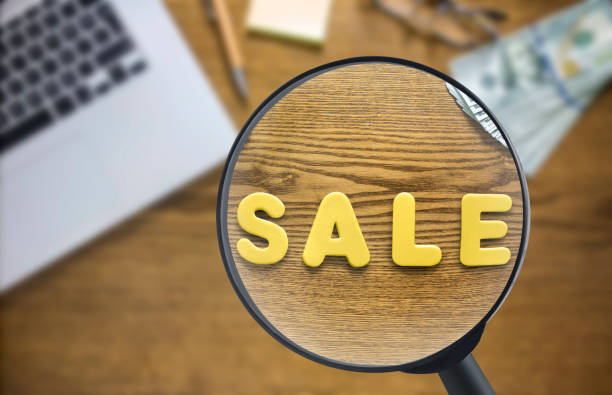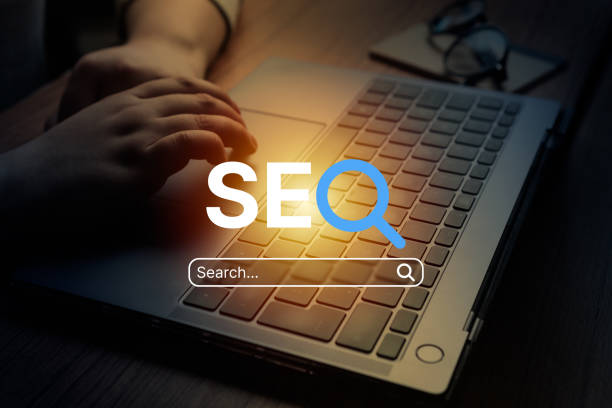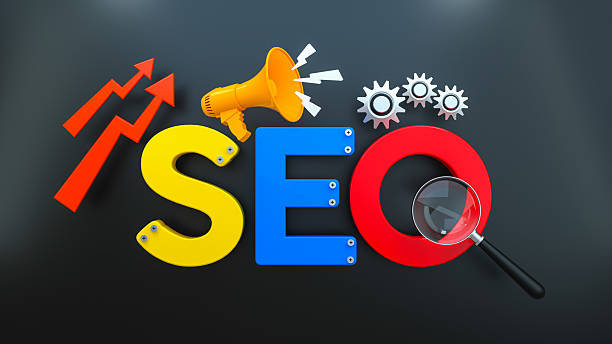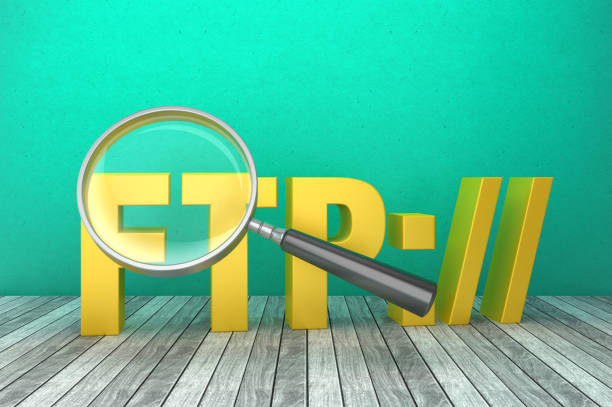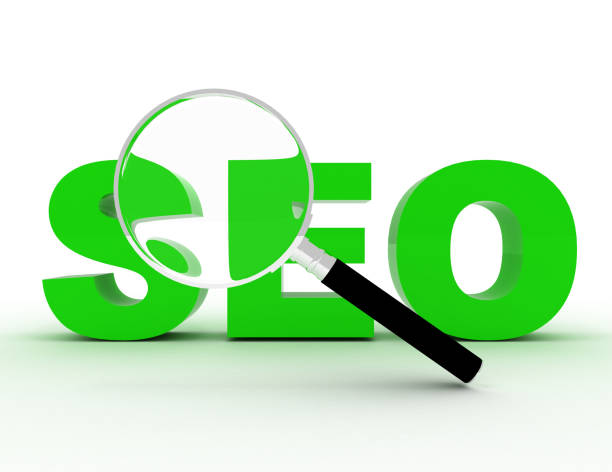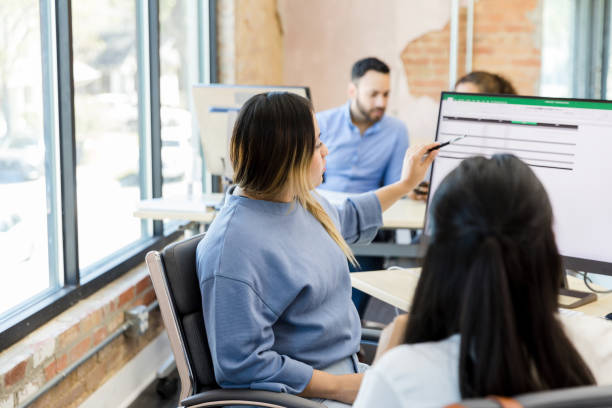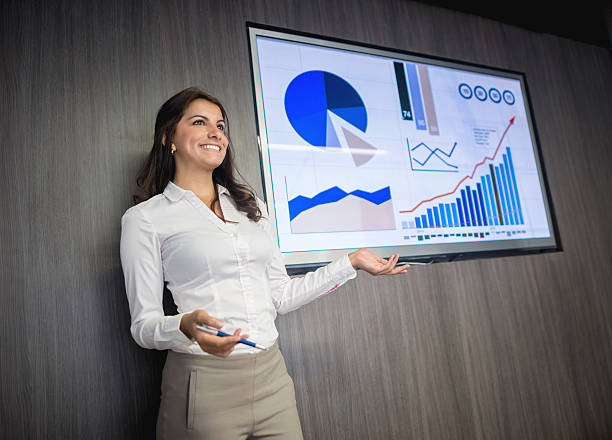What is On-Page SEO and Why Does it Matter?
What is On-Page SEO and Why Does it Matter
On-Page SEO refers to a set of actions you take within your website to improve its ranking in search engine results, such as Google.
These actions include content optimization, using appropriate keywords, improving site structure, and increasing page loading speed.
The importance of On-Page SEO stems from the fact that it helps search engines better understand your site’s content, and as a result, displays your site in relevant search results.
In fact, On-Page SEO is the most fundamental and essential part of an SEO strategy, and without it, efforts for Off-Page SEO alone will not be fruitful.
Wikipedia can be a great source for gaining more information about various SEO topics.
In today’s digital world, where competition for user attention is fierce, #On-Page SEO plays a vital role in the visibility of your website.
By properly optimizing your website pages, you can attract more organic traffic, which in turn will lead to increased sales and revenue.
In other words, On-Page SEO helps you introduce your business to your target audience and solidify your position in the online market.
One of the most important aspects of On-Page SEO is keyword optimization.
Choosing the right keywords and using them correctly in content, titles, meta descriptions, and other parts of the site helps search engines understand the main topic of your site and display it in relevant search results.
In addition, improving site structure and creating a suitable user experience is also of great importance.
A website with a structured and easy navigation is not only more attractive to users, but also more understandable for search engines.
On-Page SEO makes search engines value your website more.
Ultimately, On-Page SEO can be said to be a long-term investment that will yield significant results.
By taking the right and consistent actions in the field of On-Page SEO, you can improve your site’s ranking on Google, attract more organic traffic, and consequently, achieve your business goals.
On-Page SEO is an ongoing process that requires review and updates.
Are you tired of having visitors to your online store but no sales? Rasaweb solves your core problem by designing professional online stores!
✅ Significant increase in sales with targeted design
✅ Flawless user experience for your customers
⚡ Get free consultation!
Targeted Keyword Research for On-Page SEO
Click here to preview your posts with PRO themes ››
Targeted Keyword Research for On-Page SEO
Keyword research is one of the most important steps in the On-Page SEO process.
Choosing the right keywords that are relevant to your business helps you create content that is appealing to your target audience and ranks higher in Google search results.
There are various tools available for keyword research, including Google Keyword Planner, Ahrefs, and SEMrush.
These tools help you find popular keywords that are relevant to your field and assess the level of competition for each keyword.
One very important point is to correctly identify keywords in the On-Page SEO process.
When researching keywords, you should keep a few points in mind.
First, the keywords should be relevant to your business and the needs of your target audience.
Second, the keywords should have a reasonable search volume, meaning that a sufficient number of people are searching for these words on Google.
Third, the keywords should not have very high competition, as it will be very difficult to rank for these words.
Using Long-Tail Keywords can be a suitable solution to reduce competition.
These keywords are longer and more specific, and usually have less competition.
After choosing the right keywords, you should use them strategically in your site content.
Keywords should be used in page titles, meta descriptions, internal headings (H1, H2, H3, etc.), the main text of the content, and images.
However, you should be careful to use keywords naturally and without exaggeration, as excessive use of keywords can result in your site being penalized by Google.
This technique is called Keyword Stuffing and has a negative impact on your site’s SEO.
On-Page SEO using the right keywords increases site traffic.
In addition, you should also pay attention to keyword optimization for local search (Local SEO).
If your business has a physical location, you should use your keywords along with the name of your city or region to rank higher in local search results.
For example, if you have a restaurant in Tehran, you can use keywords such as “good restaurant in Tehran” or “best food in Tehran.”
This helps you attract more local customers.
Reading Ahrefs articles on keyword research can be very helpful.
Click here to preview your posts with PRO themes ››
Optimizing Titles and Meta Descriptions for On-Page SEO
Optimizing Titles and Meta Descriptions for On-Page SEO
Title Tags and Meta Descriptions are two important elements in On-Page SEO that play a significant role in attracting users to your website through Google search results.
Titles are the blue text that appear at the top of each search result, and meta descriptions are a short summary of the page’s content that appears below the title.
Optimizing these two elements helps you increase your click-through rate (CTR) and attract more traffic to your site.
On-Page SEO plays an important role in optimizing these two aspects.
Titles should be short, engaging, and relevant to the page content.
The length of titles should not exceed 60 characters, as Google shortens longer titles.
Titles should include the main keyword of the page and be written in a way that encourages users to click.
Do not neglect using engaging and persuasive words such as “best,” “new,” and “free” in titles.
For example, a good title for a product page might be “Buy Samsung Galaxy S23 Mobile Phone at the Best Price.”
Meta descriptions should be an accurate and compelling summary of the page content.
The length of meta descriptions should not exceed 160 characters.
Meta descriptions should include the main keyword of the page and be written in a way that encourages users to click.
In meta descriptions, you can mention the benefits and unique features of your product or service.
For example, a good meta description for an SEO services page might be “Professional SEO services with guaranteed top ranking on Google.
Increase traffic and sales with On-Page and Off-Page SEO.”
In addition, you should note that titles and meta descriptions should be unique to each page of your site.
Using duplicate titles and meta descriptions can result in your site being penalized by Google.
To manage and optimize titles and meta descriptions, you can use SEO plugins such as Yoast SEO or Rank Math.
Optimizing these elements in On-Page SEO has a direct impact on the site’s ranking.
| SEO Element | Description |
|---|---|
| Title Tag | The title of the page that appears in search results |
| Meta Description | A summary of the page’s content that appears below the title |
Content Optimization for On-Page SEO
Content Optimization for On-Page SEO
Content is king! This phrase is very well-known in the SEO world and indicates the high importance of content in ranking sites on Google.
Producing high-quality content that is engaging and relevant to the needs of the target audience is one of the most important factors for success in On-Page SEO.
Your content should be valuable and useful and answer users’ questions and problems.
On-Page SEO can improve the site’s ranking by producing quality content.
When producing content, you should keep a few points in mind.
First, your content must be unique and original.
Copying content from other sites can result in your site being penalized by Google.
Second, your content should have a proper structure and use titles, subtitles, paragraphs, and images correctly.
This helps readers to easily understand and enjoy your content.
Third, your content should be optimized for keywords.
Keywords should be used naturally and without exaggeration in the text.
Using related and synonymous keywords can also help improve your site’s ranking.
Moz is a good resource for learning SEO.
In addition, you should also pay attention to optimizing images.
Images should have a proper file name and Alt Text.
The Alt Text should be a short description of the image content and include the main keyword of the page.
Images should be optimized for loading speed and their size should be as small as possible.
Using modern image formats such as WebP can help improve your site’s loading speed.
Optimizing images is an important aspect of On-Page SEO.
Finally, you should note that content should be updated continuously.
Google likes sites that regularly produce new and updated content more.
Creating a content calendar and planning for regular content production can help you in this regard.
On-Page SEO, by producing high-quality and up-to-date content, can help improve your site’s ranking.
Are you dissatisfied with the low sales of your online store?
Rasaweb is your solution for having a professional and high-selling online store.
✅ Significant increase in sales and revenue
✅ Easy and enjoyable shopping experience for customers
⚡ Get a free consultation from Rasaweb now!
Improving Site Structure and Internal Linking for On-Page SEO
Improving Site Structure and Internal Linking for On-Page SEO
Site structure and internal linking are two important factors in On-Page SEO that help search engines better understand your site’s pages and give them a better ranking.
A structured and logical site helps users easily navigate your site and find the content they want.
Internal linking helps search engines understand the connection between different pages of your site and determine the value of more important pages.
To improve your site structure, you need to create a Sitemap and submit it to Google.
A sitemap is a list of all the pages on your site that helps search engines to fully index your site.
Also, you should use a proper URL structure.
URLs should be short, readable, and include the main keywords of the page.
Avoid using long and complex URLs.
On-Page SEO has a big impact on the structure of the site.
Internal linking means creating links between different pages of your site.
Internal links should be relevant to the page content and help users learn more about the topic they are interested in.
Internal linking helps search engines determine the value of more important pages and give them a better ranking.
For example, you can link from subpages to your main pages to increase the value of the main pages.
One of the important methods of On-Page SEO is creating related internal links.
In addition, you should also pay attention to optimizing the site menu.
The site menu should include the most important pages of your site and be designed in such a way that users can easily navigate your site.
Using proper categorization and correct tagging of pages can also help improve your site structure.
Optimizing site structure and internal links can greatly help your site’s On-Page SEO.
Optimizing Site Speed for On-Page SEO
Optimizing Site Speed for On-Page SEO
Site loading speed is one of the important factors in ranking sites on Google.
Users who enter your site expect your site pages to load quickly.
If your site pages load slowly, users will leave your site and visit competitor sites.
Google also likes sites that have high loading speed more and gives them a better ranking.
On-Page SEO helps to optimize site speed.
To improve site speed, you can use various tools such as Google PageSpeed Insights and GTmetrix.
These tools help you identify your site’s speed problems and find appropriate solutions to fix them.
Some common solutions to improve site speed include compressing images, enabling caching, reducing the size of CSS and JavaScript files, and using a suitable web hosting service.
Compressing images means reducing the size of image files without reducing their quality.
This helps you to increase the image loading speed.
Enabling caching means saving a copy of your site pages in the user’s browser.
This causes your site pages to load quickly on the user’s next visits.
Reducing the size of CSS and JavaScript files can also help improve your site speed.
This is done by removing spaces, comments, and unnecessary code from the files.
In addition, you should also pay attention to choosing a suitable web hosting service.
A high-quality web hosting service can help improve your site’s speed and stability.
Avoid using free or cheap web hosting services, as these services usually have many limitations and cannot provide a suitable speed and stability for your site.
Optimizing site speed is one of the important factors of On-Page SEO.
Mobile Optimization for On-Page SEO
Mobile Optimization for On-Page SEO
Nowadays, most internet users access websites through Mobile Devices.
For this reason, optimizing a site for mobile is one of the most important factors in On-Page SEO.
Google likes sites that are optimized for mobile more and gives them a better ranking.
Mobile optimization means that your site should be displayed correctly on mobile devices and users should be able to easily navigate your site and find the content they want.
On-Page SEO gives special importance to mobile optimization.
To optimize your site for mobile, you can use Responsive Design.
Responsive design means that your site automatically adapts to the screen size of the user’s device.
This causes your site to be displayed correctly on all mobile devices.
Also, you should use fonts and images of appropriate size so that users can easily read and see the content of your site.
In addition, you should also pay attention to the loading speed of the site on mobile devices.
Mobile users usually use the internet at a slower speed, so the loading speed of your site should be as high as possible.
You can use tools such as Google PageSpeed Insights Mobile to check your site speed on mobile devices and find appropriate solutions to fix speed problems.
Google Developers is a good source for mobile optimization information.
Finally, you should also pay attention to the User Experience on mobile devices.
Your site should have easy and logical navigation and users should be able to easily find the content they want.
Avoid using Pop-up Ads on mobile devices, as these ads can disrupt the user experience and cause users to leave your site.
Mobile optimization is one of the main pillars of On-Page SEO.
| Optimization Feature | Description |
|---|---|
| Responsive Design | Designing the site in such a way that it is displayed correctly on all devices |
| Loading Speed | Optimizing the loading speed of the site on mobile devices |
Using Schema Markup for On-Page SEO
Using Schema Markup for On-Page SEO
Schema Markup is a type of code that helps you provide more information about your site content to search engines.
Using Schema Markup, you can tell search engines what your page is about and what information it provides.
This helps search engines better understand your site content and, as a result, display your site in relevant search results.
Using Schema Markup is an effective method in On-Page SEO.
On-Page SEO uses schema markup for indexing and improving indexing.
There are different types of Schema Markup that you can use for different types of content.
For example, you can use Schema Markup for articles, products, events, restaurants, and so on.
To use Schema Markup, you need to add the relevant code to your HTML pages.
You can do this manually or by using SEO plugins.
Schema.org is a good resource for more information about Schema Markup.
Using Schema Markup can help improve your click-through rate (CTR) in search results.
When users see more information about your site content in search results, they are more likely to click on your site link.
Also, using Schema Markup can help improve your site’s ranking on Google.
Google likes sites that use Schema Markup more and gives them a better ranking.
Finally, you should note that using Schema Markup correctly is very important.
If you do not use Schema Markup correctly, Google may penalize your site.
Therefore, before using Schema Markup, be sure to carefully read Google’s guidelines and make sure that your Schema Markup code is correct and valid.
Using schema markup correctly is a powerful On-Page SEO tool.
Are you frustrated with the low conversion rate of your online store? Rasaweb transforms your online store into a powerful tool for attracting and converting customers!
✅ Significant increase in the conversion rate of visitors to buyers
✅ Unparalleled user experience to increase customer satisfaction and loyalty⚡ Get a free consultation from Rasaweb!
Monitoring and Analyzing On-Page SEO Results
Monitoring and Analyzing On-Page SEO Results
After taking On-Page SEO measures, you should regularly monitor and analyze your results.
This helps you understand which of your actions were effective and which actions need improvement.
Monitoring and analyzing On-Page SEO results is an ongoing process that should be done regularly.
On-Page SEO will be useless without analysis and monitoring.
To monitor On-Page SEO results, you can use various tools such as Google Analytics and Google Search Console.
Google Analytics helps you track your site traffic and understand where users are coming from and which pages they visit the most.
Google Search Console helps you track your site’s performance in Google search results and understand which keywords are driving traffic to your site.
Using these tools, you can gain valuable insights into user behavior, keyword performance, and your page rankings on Google.
This information helps you improve your On-Page SEO strategy and achieve better results.
For example, if you find that a particular keyword is driving a lot of traffic to your site, you can create more content about that keyword and improve your ranking for that keyword.
On-Page SEO is a continuous task and analysis plays an important role.
In addition, you should regularly check the ranking of your pages on Google and make sure that your pages are ranked high.
If you find that a particular page is ranked low, you should take the necessary steps to improve that page’s ranking.
These steps can include content optimization, internal and external linking, and improving page loading speed.
Monitoring and analyzing On-Page SEO results is a vital process for success in SEO.
On-Page SEO is only effective by reviewing and optimizing the information obtained in the analysis.
Avoiding Common Mistakes in On-Page SEO
Avoiding Common Mistakes in On-Page SEO
In the On-Page SEO process, mistakes can occur that can damage your site’s ranking on Google.
Avoiding these mistakes and adhering to the correct SEO principles helps you achieve better results and avoid being penalized by Google.
Some common mistakes in On-Page SEO include Keyword Stuffing, Duplicate Content, Unnatural Links, and ignoring Mobile Optimization.
Keyword Stuffing means using keywords unnaturally and excessively in the site content.
This can cause Google to penalize your site.
Copying content from other sites means copying text or image content from other sites and using it on your site.
This can cause Google to penalize your site and reduce your site’s ranking.
Creating unnatural links means buying links or exchanging links with irrelevant sites.
This can cause Google to penalize your site.
Ignoring mobile optimization means not optimizing the site for display on mobile devices.
This can cause mobile users to leave your site and reduce your site’s ranking on Google.
To avoid these mistakes, you must adhere to the correct SEO principles and regularly check your site and fix any potential problems.
Adhering to On-Page SEO principles prevents your site from being penalized by Google.
You should also pay attention to Google’s algorithms and track their changes.
Google is constantly updating its algorithms and penalizing sites that do not comply with the new algorithms.
Therefore, you should always be aware of the latest changes in Google’s algorithms and adjust your SEO strategy accordingly.
Adhering to On-Page SEO principles and paying attention to Google’s algorithms can prevent potential problems.
Frequently Asked Questions
| Row | Question | Answer |
|---|---|---|
| 1 | What is On-Page SEO? | On-Page SEO refers to a set of actions taken within a website (on its pages) to improve the site’s ranking in search engine results. This includes optimizing content, site structure, and HTML codes. |
| 2 | Why is On-Page SEO important? | On-Page SEO helps search engines better understand the content of a page and determine whether that page is relevant and valuable to users’ searches or not. This better understanding leads to higher rankings. |
| 3 | What is the first and most important step in On-Page SEO? | Keyword Research is the most important initial step. By finding the right keywords, it is possible to produce targeted content that is relevant to users’ needs. |
| 4 | What is the role of the Title Tag in On-Page SEO? | The Title Tag is one of the most important ranking factors and should include the main keyword. This tag is displayed in search results as the title of the page and affects the click-through rate (CTR). |
| 5 | What is the importance of Meta Description? | The Meta Description does not directly affect ranking, but by providing an attractive summary of the page content in search results, it can encourage users to click and, as a result, increase the click-through rate (CTR). |
| 6 | Why is the use of Headings (H1, H2, etc.) important in content? | Headings help structure the content and improve readability for users and search engine crawlers. Using keywords in headings also helps the search engine better understand the topic. |
| 7 | What does Image Optimization in On-Page SEO include? | It includes compressing images to reduce size, using descriptive and relevant file names, and filling the Alt tag (alternate text) with relevant keywords to help search engines understand the content of the image. |
| 8 | What is meant by Internal Linking in On-Page SEO? | Internal linking refers to creating links between different pages of a website. This helps distribute page authority (Link Equity), improve user experience, and help search engine crawlers discover new pages. |
| 9 | Why is Page Speed important for On-Page SEO? | Page Speed is a direct ranking factor and heavily affects user experience. Slow pages can lead to increased Bounce Rate and reduced user engagement. |
| 10 | What role does quality content play in On-Page SEO? | Quality content, comprehensive, unique, and valuable to the user, is the core of On-Page SEO. This content not only attracts and retains users but also sends positive signals to search engines and helps with better ranking. |
And other services of Rasa Web advertising agency in the field of advertising
Intelligent Website Development: A professional solution to increase click-through rates with a focus on intelligent data analysis.
Intelligent Google Ads: Designed for businesses looking to analyze customer behavior through marketing automation.
Intelligent Conversion Rate Optimization: A professional solution to increase click-through rates with a focus on SEO-driven content strategy.
Intelligent Data Analysis: A professional solution to improve SEO ranking with a focus on intelligent data analysis.
Intelligent Brand Identity: Designed for businesses looking to increase sales through attractive user interface design.
And over a hundred other services in the field of internet advertising, advertising consulting, and organizational solutions
Internet Advertising | Advertising Strategy | Advertorial Report
Resources
On-Page SEO Guide from SEObook
,Ahrefs On-Page SEO Guide
,On-Page SEO Optimization from Moz
,On-Page SEO Guide from Search Engine Journal
? In today’s competitive world, a strong online presence is vital for every business. Rasaweb Afrin Digital Marketing Agency, by providing comprehensive services including fast website design, professional SEO, social media management, and targeted advertising campaigns, paves the way for you to reach the peaks of success. With us, your business will be seen at its peak.
📍 Tehran, Mirdamad Street, next to the Central Bank, South Kazeroun Alley, Ramin Alley, No. 6


